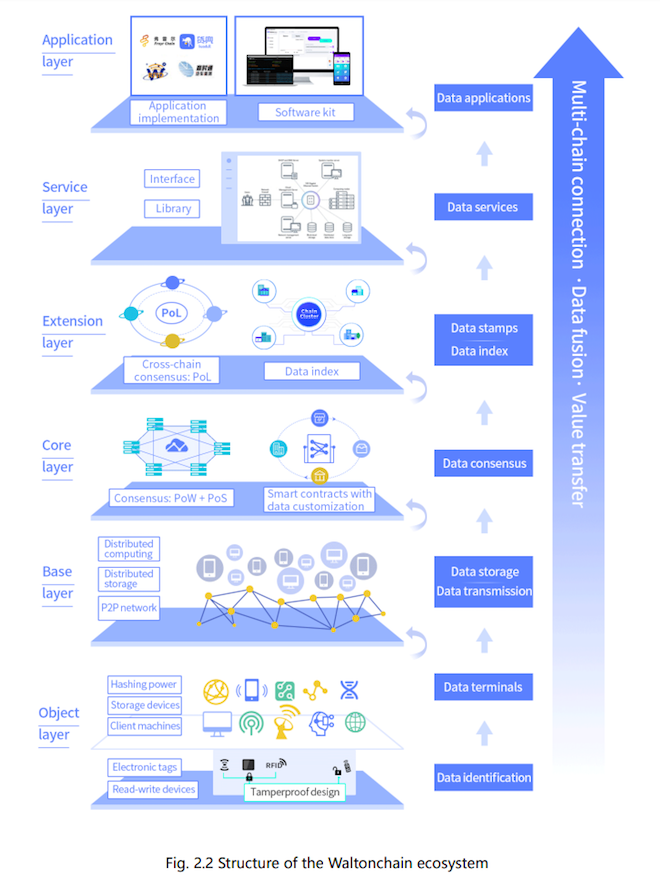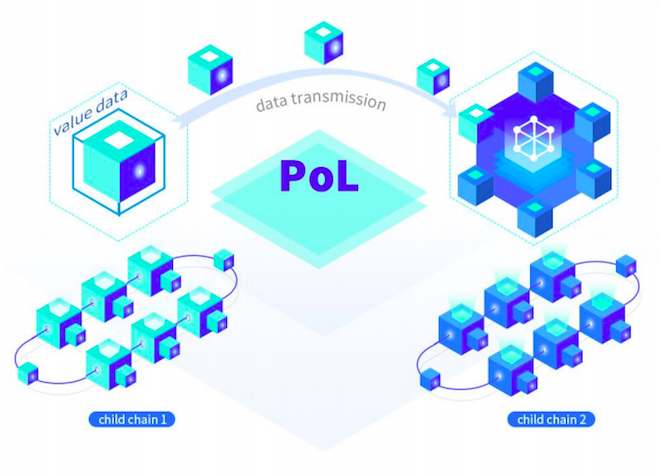Waltonchain is a groundbreaking project combining both blockchain and Internet of Things (IoT) technology.
While Waltonchain is notorious for using blockchain to revolutionize the supply chain management industry, their technology is applicable to many other industries.
One thing that sets Waltonchain apart is their hardware manufacturing expertise.
Perhaps computer scientist Alan Kay put it best when he said:
People who are really serious about software should make their own hardware.
Waltonchain currently manufactures their own hardware, such as RFID sensors, in-house, and at roughly 30% of the cost of their competition. This puts them at a considerable advantage, both technologically and financially.
Even in light of the recent bear market, Waltonchain has been hard at work, making a name for themselves and reaching milestones. Recently, they announced a major partnership with a shopping district in Korea as well as released an updated version of their whitepaper.
Waltonchain Partners with Fashion Town (Dongdaemun) to Initiate the First Blockchain + RFID Solution in South Korea

On September 5, 2018, the chairman of Dongdaemun Fashion Town Tourism Zone (Hong Seokgi), Waltonchain CEO (Mo Bing), and the CEO of DDM International (Lee Jongseon) created an agreement to implement blockchain technology and commercialization of Waltonchain’s RFID chip in Dongdaemun Fashion Town.
This partnership will promote the development and application of blockchain + RFID technology in the following sectors: retail, logistics, distribution, store management, and customer service.
You can read the Waltonchain official press release here.
Dongdaemun Fashion Town: South Korea’s Largest Fashion District
Dongdaemun is the most popular shopping district for South Koreans, and is made up of more than 35,000 wholesale shops, individual shops, and cultural spaces. This fashion district attracts more than 9 million visitors per day, generating over US$50 million per day in revenue.
The press release states:
The implementation of Waltonchain’s Blockchain + RFID solution in Dongdaemun Fashion Town is the first application use case of blockchain technology in fashion logistics and retail industry within South Korea, which will greatly optimize the logistics and retail system of the whole tourism fashion town. This is a great step forward in the development of the Dongdaemun Fashion Town”, said the chairman of Dongdaemun Fashion Town Tourism Zone, Mr. Hong Seokgi.
Waltonchain will also provide assistance and technical support for the development and circulation of DDM CHAIN, a new token being offered by Dongdaemun Fashion Town Tourism Zone. Presumably this token will be launched as a child chain to the WTC ecosystem.
And, as South Korea is one of the most advanced countries when it comes to crypto, it makes sense that Waltonchain would want to gain a foothold there. Fortunately, the Waltonchain team has deep connections to the South Korean government, and has already announced several key partnerships in the country.
How Will This Partnership Impact WTC?
This partnership will most likely lead to a DDM token being launched as a WTC child chain, leading to an increase in the demand for the WTC token. Waltonchain runs on a parent-child chain model. An increase in the demand for child chains would also mean an increase in demand for WTC tokens, which are required to launch child chains.
It’s currently unclear how many new child chains will result from this new agreement.
Waltonchain will be providing RFID chips and chip readers to the Dongdaemun Fashion Town and should be implemented in real stores for a trial operation as soon as November 2018.
Waltonchain Releases Whitepaper 2.0
On September 4, Waltonchain released an updated version of their whitepaper.
You can read an earlier version of their whitepaper here.
Overall, I found the new whitepaper to be a very interesting read. I loved the industry overview, updates to projects, and the Waltonchain Ecosystem explanation.
On the negative side, it read more like a marketing pamphlet than a whitepaper, since a bunch of technical details were left out. I look forward to a deeper explanation of the economics and game theory of their WPoC and PoL consensus algorithms in future updates.
Highlights of the new whitepaper include:
- Internet of Things + Blockchain industry overview
- Waltonchain Proof of Contribution (WPoC) = PoW + PoS + PoL
- Smart Contracts on Waltonchain & Chain Clusters
- Project updates (hardware, food and clothing traceability, and a consulting practice)
Internet of Things + Blockchain Industry Overview
The whitepaper begins by sharing the potential applications that the Internet of Things (IoT) movement may produce. Then it explains the challenges the IoT movement faces, which include poor compatibility, poor security, low architecture flexibility, high cost, poor scalability, and data uniformity.
It then delves into how blockchain can be used to alleviate many of the concerns of the IoT industry, which revolves around data.
From the whitepaper:
In the new era of information society, everything interconnected together should be data-centered; and data should be the core of the entire Value Internet of Things. In other words, blockchain empowering via the IoT directly adds the ‘credible value channel’ to it, not only solves the inherent pain points of the IoT but also creates the new IoT definition.
It then provides details of how Waltonchain specifically addresses the unique challenges to the IoT space. Below is a graphic I found very helpful in illustrating Waltonchain’s process of data fusion and value transfer.

Waltonchain Proof of Contribution (WPoC) = PoW + PoS + PoL
Waltonchain uses a combined Proof-of-Work (PoW) and Proof-of-Stake (PoS) consensus algorithm for their parent chain.
PoW and PoS both ensure that parent-chain blocks are unique and secure. However they don’t go into detail of exactly how they will balance PoW and PoS. To paraphrase: “we’re using the good parts of PoW and PoS while minimizing the bad.”

They also introduce a brand-new consensus mechanism called Proof of Labor, which is used for data transmission and token exchange between parent, child, and cross-chain nodes on the network (a.k.a. Super Master Nodes, Guardian Master Nodes, and Master Nodes, which we already knew about).
Smart Contracts on Waltonchain & Chain Clusters
Waltonchain supports smart contracts of popular blockchains, such as Fabric and Ethereum. This enables child chains to launch with different architecture according to requirements of the specific project.
Waltonchain predicts that public-chain ecosystems will inevitably form “chain clusters.” Chain clusters are essentially groups of various related child chains that regularly share information (e.g. all the companies that form Samsung’s mobile phone hardware supply chain).
In the vast Waltonchain ecosystem, these chain clusters provide secondary value to complement network participants and the ecosystem as a whole. For example, chain clusters enable various child chains to easily exchange, trade, and query relevant data.
Project Updates (Hardware, Food Traceability, Retail, and a Consulting Practice)
Waltonchain also provided useful updates to various projects they are working on in their whitepaper. Special attention was given to their hardware products, food traceability programs, retail programs, and an in-house consulting practice.
Here’s what they said about hardware:
The Waltonchain technical team has developed a smart RFID reader-writer with independent intellectual property rights, which can collect data, process it and upload to blockchain automatically. We also developed a smart data collecting device with independent intellectual property rights, which automatically collects, processes and uploads various sensor data, audio and video, location information, etc. to blockchain.
Then they gave basic overviews of their food and clothing traceability programs and announced a new blockchain consulting practice in China.
After switching over to their mainnet (no mention of a projected date in their whitepaper), they will focus on 3 main child-chain projects:
- Freyrchain, the art collection chain; uploading to blockchain and transmission of all kinds of collection data.
- Huodull logistics child chain; uploading to blockchain and transmission of all kinds of online logistics data.
- KALTENDIN clothing child chain; uploading to blockchain and transmission of all kinds of clothing industry data.
Surprisingly, there was no mention of their Smart City initiatives or Alicloud partnership.
Wrapping Up
This current bear market will likely cleanse the industry of the many superfluous altcoins that were pumped in late 2017/early 2018 (probably for the best).
The projects that survive this bear market will be more durable and have an increased chance to accumulate value in the long run.
It’s a good sign to see Waltonchain releasing steady updates and announcing new partnerships like those mentioned in this article. I believe Waltonchain will survive the altcoin apocalypse and patient investors will be rewarded.
What are your thoughts about the retail partnership in Korea? Or how about the new Waltonchain Whitepaper 2.0?
Related: Why Waltonchain (WTC) is A Smart Long-Term Investment (Opinion)

